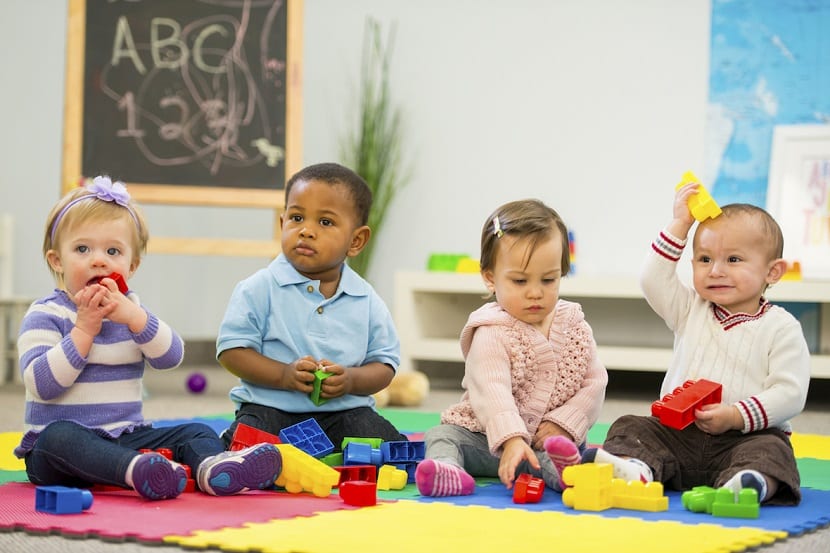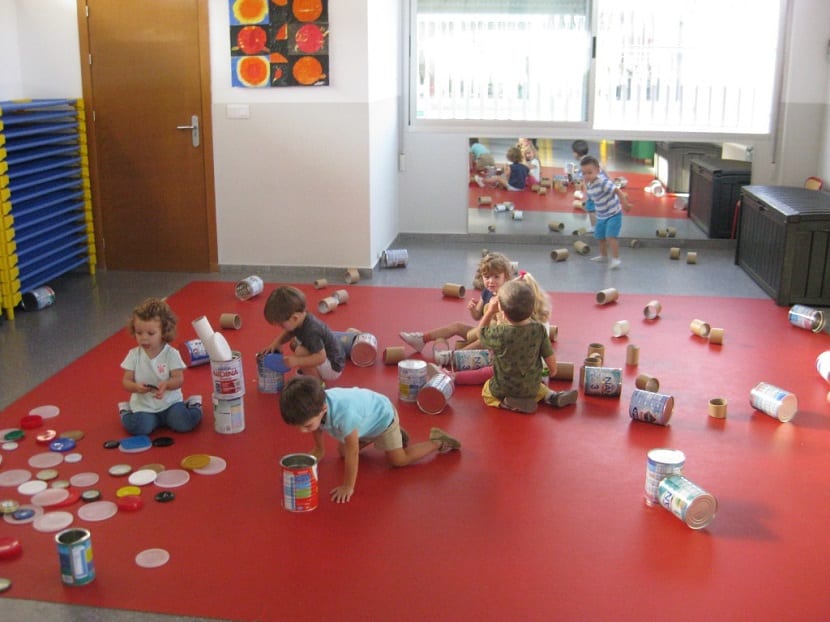
There are many types of games and activities to stimulate the development of younger children. When they start kindergarten or nursery school, children do different jobs that help them learn. One of these activities is the Heuristic Game, created by the renowned pedagogue Elinor Goldschmied to carry out in children between 12 and 24 months.
This activity is carried out in early childhood education centers, in small groups in which between 8 and 10 children participate. What is intended to be achieved through this activity is that the child learns individually, discovering, researching and putting into practice different skills. In addition, it allows the educator to have a more particular vision of each child, since the adult does not participate actively in the game.
What is Heuristic Game

The heuristic game consists of an activity with different objects and toys that are not classified as didactic. These elements can be of any type, even objects that are normally kept at home and that allow the child to put different skills into practice. Play allows children to manipulate objects with different textures, stacking them together, opening and closing, placing toys inside other objects etc.
For a specified time, children can freely play with all the exhibits. Each one will discover and use the materials as they want, without the educator participating but will always remain close to the children. Once the time has passed, the second part of the game begins, which consists of classify all materials used. The adult participates in this phase of the game, as a support so that the little ones can classify and organize the toys.
The perfect environment and the right materials
Children are very easily distracted, so it is necessary that the room where the heuristic game takes place is free of distractions. The usual toys should be collected and out of sight of the little ones. It is also important choose a time where children are active, so that they can actively participate. And finally and very importantly, during the time the game lasts nothing can distract the attention of the little ones, so no one should enter or leave the classroom or knock on the door, etc.
The necessary materials can be simple objects that can be found at home, even in a natural area such as a park or forest. It is important that children have lots of variety and enough materials for everyone, so it will be necessary to accumulate a significant amount of objects. It is recommended that there are at least 15 different types of objects and that each child have between 20 and 50 pieces.

You can use hundreds of simple materials, some examples:
- Tweezers to hang clothes from natural materials such as wood
- Stones of a medium size so that there is no risk of choking
- Seashells
- Nuts
- Corks
- Small tennis or ping pong balls
- Hairdressing rollers
- Empty containers of different sizes
What is the objective of the game and what is achieved in the child
The heuristic game is based on active learning, so that the child has the possibility of developing different skills in a self-taught way. This activity is very advantageous in many aspects, including:
- Children work his physical abilities, emotional and social
- They discover work in a calm and silent environment, prepared to motivate creativity and develop imagination
- They learn different concepts such as weight, color, volume or the amount
- Improves your concentration and your ability and your manual skills
- It encourages el autonomous play and free action
- Personal evolutionEach child handles and uses objects in different ways, in the way that each one perceives them. In the absence of a specific goal, there is no possibility that the child will not be able to reach it, there will never be failure and no child will be the winner or the loser.
In addition, this type of activity allows the educator to have an individual vision of each child. Knowing more specifically the personality of each one, will allow the educator to offer appropriate activities to each child. In this way you can direct future activities based on the interests of each one.